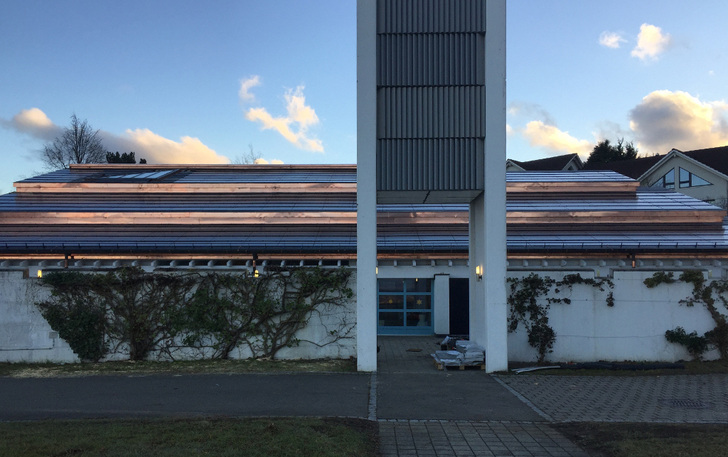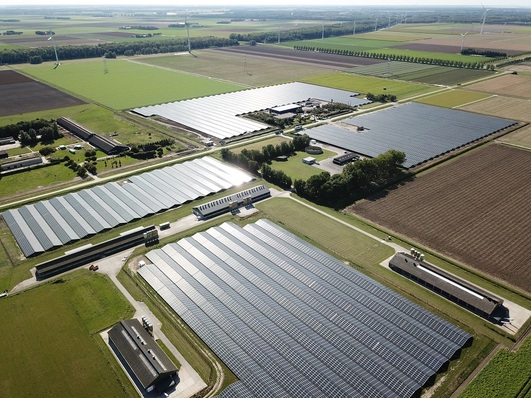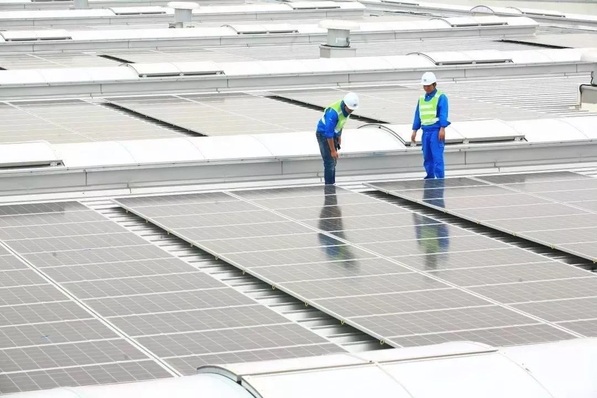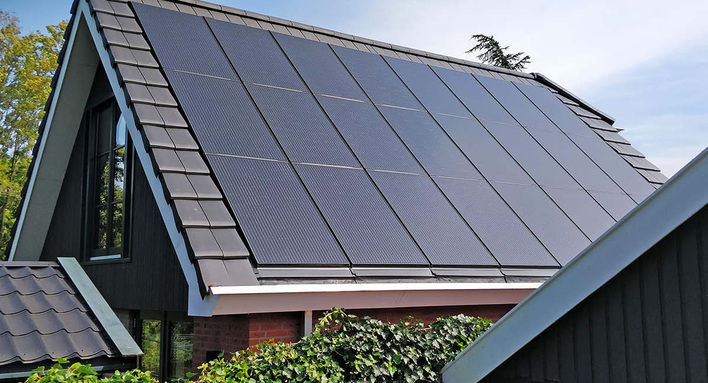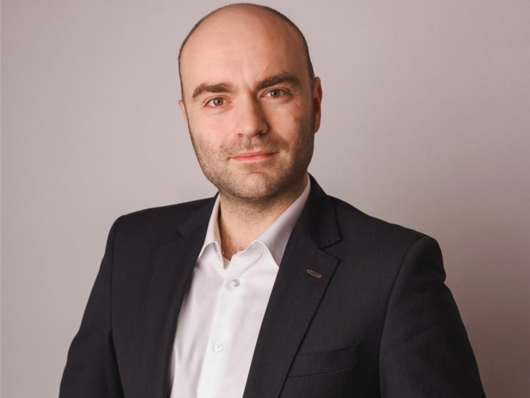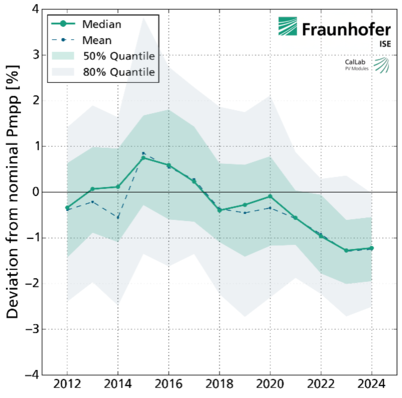In this week's topic we move from solar that is put on top of existing roofs to what architects can achieve when they integrate the solar generators into the building envelope. Often – as in today's case – that still involves a solar roof. But will you just look at the rest of the building, asl well:
The Roman Catholic Church of St. Farnziskus in the small Swiss community of Ebmatingen, just a few kilometres southeast of Zurich, was built 30 years ago. This year, the building was renovated and brought up to the latest technical standards in terms of energy efficiency. In the future the energy will be supplied by a mixture of different technologies. The new and more thickly insulated roof was partly covered with photovoltaic modules. The remaining roofing consists of PVT elements. These are solar thermal collectors that are additionally equipped with photovoltaic modules.
This gives the church a total photovoltaic output of 90 kilowatts. Since some of the modules are oriented to the north, the yield is a low 78.9 megawatt hours per year compared to what it would be if the modules were oriented purely to the south. But that is 221 per cent of the electricity used in the church – including for heating.
Completely climate-neutral
This is because only part of the thermal energy comes from the PVT elements on the roof. The actual heating load is taken over by a geothermal system. The heat pump of this system runs exclusively on solar power. In this way, the parish of Ebmatingen manages to operate its church in a completely climate-neutral way. This concept in combination with the architecturally outstanding implementation was awarded this year's European Solar Prize in the category "Owners and operators of renewable energy systems".
The jury justified its decision with the fact that the combination of old and new is in the tradition of Hermann Scheer, the founder of Eurosolar. "Although agnostic, he spoke at the inauguration of one of Rome's largest photovoltaic systems near St. Peter's Basilica in 2008," the jury emphasised. "Franziskus Ebmatingen is a model for using the solar potential of churches everywhere and – one could say – accepting one of the heavenly gifts: the power of the sun". (su/mfo)
Here, in case you missed it, is Part 5 of last week's series on commercial rooftop solar. Tomorrow we will show you a glass facade that nicely combines elegance and solar generation.


